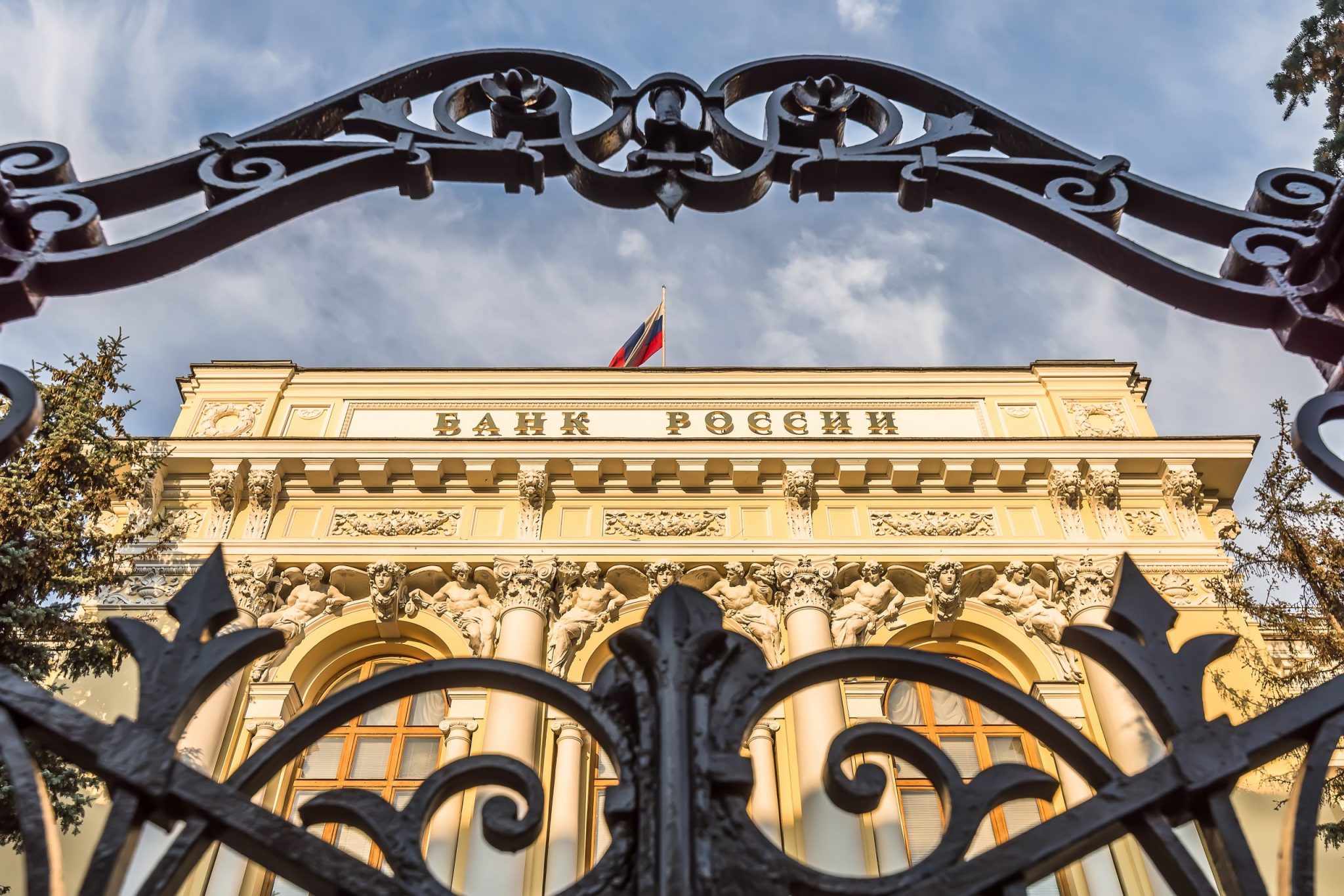As Russia has menaced Ukraine with a buildup of troops in recent weeks—and even after those forces ultimately crossed the border—much media and expert commentary has focused on what the U.S. and EU sanctions response should be, analyzing its effects and predicting its timing. As CNN reported explosions in major Ukrainian cities on Wednesday night, it added in the next breath that the White House was expected to respond with powerful sanctions Thursday.
Sanctions are an important tool for imposing costs on Russia, but they are not powerful enough to change behavior in the Kremlin. Even the most aggressive sanctions in U.S. history would not have the ability to stop Russia’s invasion of Ukraine in its tracks. Nor would they quickly reverse annexations of territory. That assessment is not an indictment of sanctions along the lines that they “don’t work.” It is simply asking too much of them.
The transatlantic responses that matter most are U.S. and European military, intelligence, diplomatic, and economic support for Ukraine as it defends itself from this unprovoked invasion. Strengthening military positions in NATO member states also has a powerful and immediate deterrent effect against Russian military adventurism in allied countries. The EU’s recent announcement that it plans to reduce the bloc’s reliance on imports of Russian natural gas, scheduled for early March, is of the utmost strategic consequence. If executed effectively, such a strategy would dramatically reduce Russian influence on EU foreign policy over the medium term.
How A Sanctions Package Could Affect Russia—And Why This Won’t Happen
Sanctions too are a key policy tool. But their relative importance can only be appreciated accurately in the context of those other policy dimensions. And their effect, even if implemented to perfection, is constrained by three factors: boundaries imposed by the current level of energy dependence, the time lag from implementation to maximum damage, and the political limits of economic coercion.
What would maximal (and purely hypothetical) U.S. sanctions against Russia look like? Basically, like sanctions against Iran. The foundation would be a full financial and economic embargo against Russia, prohibiting American investment, trade, payments, and any other activity involving the jurisdiction of Russia. The geographic embargo would be coupled with the “blocking” of the Russian government, meaning the freezing of its assets. Together, these two elements constitute a “comprehensive sanctions program,” which would prohibit all but a few select categories of approved activity, such as sales of food or medicine, or family remittances. On top of this primary embargo would come aggressive targeted designations of key actors for additional asset freezes, both of large companies in Russia, and, importantly, of Russia-linked actors in other countries. Targets in other countries would include companies or assets linked to Russian billionaires, energy procurement and energy export firms, and sanctions evasion networks. “Secondary sanctions” would be layered on top of these targeted designations, which would threaten third-country actors with sanctions for dealing with designated Russian companies or Russia-linked networks.
This scenario is not going to happen. The combined economic activity of the four countries currently subject to comprehensive sanctions—Cuba, Iran, North Korea, and Syria (this list excludes Russian-controlled regions of Ukraine)—totals approximately $350 billion. Russia’s gross domestic product is about $1.5 trillion. Russia is also far more integrated into the world economy, with deep exposure to Europe. Finally, and crucially, Russia is one of the top global producers of both oil and gas. When the United States mounted a concerted secondary sanctions effort designed to reduce and ultimately eliminate Iranian oil sales in 2011, Iran produced under 4 million barrels per day. Russia produces over 10 million barrels per day. Thus, a sanctions campaign aimed at Rosneft and Russian oil exports could have major global economic consequences. The situation with respect to natural gas is even more acute. Europe derives 40 percent of its natural gas supplies from Russia and has no way to substitute for most of that gas in the short term. The EU will continue to pay Gazprom as Russia carries out its assault.
For these reasons, U.S. and EU sanctions against Russia in retaliation for the 2022 invasion of Ukraine will not be as far-reaching as those targeting Iran (the EU itself banned Iranian oil imports in 2012). In the case of Iran sanctions—which ramped up in 2011, brought Iran to the negotiating table in 2013, and secured a multilateral agreement to roll back its nuclear program in 2015—success took five years. Russia is positioned to withstand economic pain longer, with larger foreign currency reserves and at least some regional allies (not to mention China’s reaction to potential Russia sanctions pressure, which is hard to guess).
Sanctions Can Work—But Only in Concert with Other Costs
Nonetheless, new U.S. and EU sanctions against Russia will likely be powerful, as they should be. The U.S. and EU can and should limit investment in and business with key sectors of the Russian economy (such as energy, mining, and defense), prohibit transfers of advanced technology, and restrict or cut off major financial institutions. The U.S. and EU should also explore creative ways to push Russian elites’ wealth out of the Western financial system, without necessarily freezing assets in every instance. New sanctions will be constrained by the reality of energy and economic interdependence, and it will take time for the economic damage to be fully felt, but they will have a powerful effect. Unfortunately, not only will Russian soldiers lose their lives attacking a country that posed no threat to them, but Russian civilians will suffer deprivation and diminished opportunity for years to come, not to mention political and perhaps even cultural isolation. The transmission channel of this economic effect is the key variable. The input of economic damage is supposed to produce the output of Russian policy change, ideally withdrawal from Eastern Ukraine; respect for Ukraine’s sovereignty; cessation of interference activities and support for rebels; and adherence to a peace agreement. This is where the tired and not very illuminating debate about the efficacy of sanctions gets bogged down, as these processes are complex and difficult to measure.
In theory, the imposition of major economic costs hurts the government, ruling elites, and the general population, which produces political pressure to change the policy that triggered the sanctions in the first place (not included in this model are sanctions programs designed to interdict or disrupt the activities of non-state transnational groups such as drug traffickers or terrorist groups). At the same time, reduced revenues directly impact the ability of the sanctioned government to fund the objectionable activity. There are also a host of less direct effects, including public diplomacy and “name and shame” elements, signaling of future intentions to deter escalation, and the like.
For this transmission channel to work, several other prerequisites must be met. The ruling regime must be susceptible to political pressure from within, from outside elites, or from the general population. The negative economic and political costs must outweigh the perceived gains achieved by the behavior that triggered the sanctions. And the sanctioned government must understand clearly which policies it has been asked to change in exchange for the removal of sanctions. Of course, in practice, sanctions tend to be only one type of pressure being attempted at a given time. It is certainly more likely that sanctions will yield the desired outcome if other types of pressure appreciably affect the target government’s calculus. In the case of Iran’s nuclear development, the United States posed a credible threat to set back the program with airstrikes. However remote the possibility, the U.S. was also capable of removing the Iranian government by force. That dynamic is different in Ukraine.
Ironically, there are three major sanctions programs of the past decade that likely produced important policy results, and all of them have suffered major setbacks. Iran sanctions produced the 2015 nuclear agreement, but the United States unliterally withdrew in 2018. That was the most clear-cut success. Sanctions against the junta ruling Myanmar were terminated in 2016 when the military allowed a transition to a more participatory government. The sanctions may have been one factor among many influencing the military junta’s thinking, including desire to lessen its dependence on China. That progress was immediately marred by severe human rights violations against the Rohingya population and was ultimately reversed in the 2021 military coup.
Finally, and most ironically of all, many observers believed that the 2014 Russia sanctions had some effect. The sanctions were more moderate than those against Iran and Myanmar, but they did raise Russia’s borrowing costs and had some limited impacts on the defense and energy sectors. It was argued that these moderate sanctions, and the specter of their expansion, had contained Russia’s annexation of Ukrainian territory to Crimea, kept a lid on the conflict in the Donbas from boiling over, and brought Russia into the Minsk agreements. If those effects were ever real, they are no longer.
The irony and difficulty of making good policy in complex and dangerous circumstances is not an argument for cynicism and despair. Wishful and fanciful thinking about a magic sanctions wand is equally unconstructive. Sanctions are just another tool in the toolbox, nothing more, and nothing less.
The views expressed in GMF publications and commentary are the views of the author alone.





